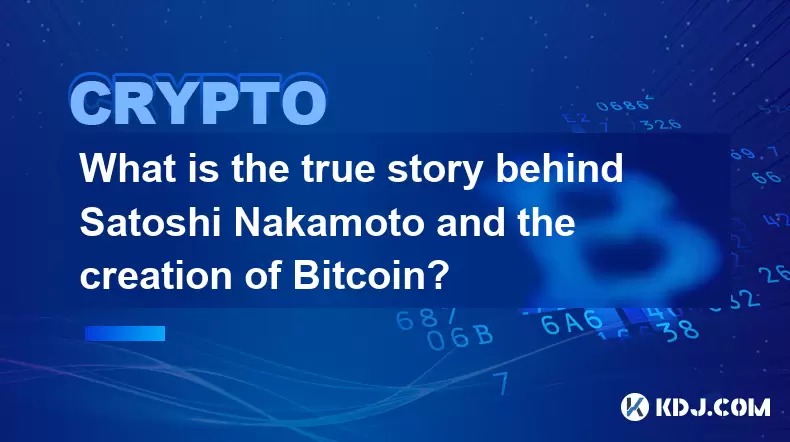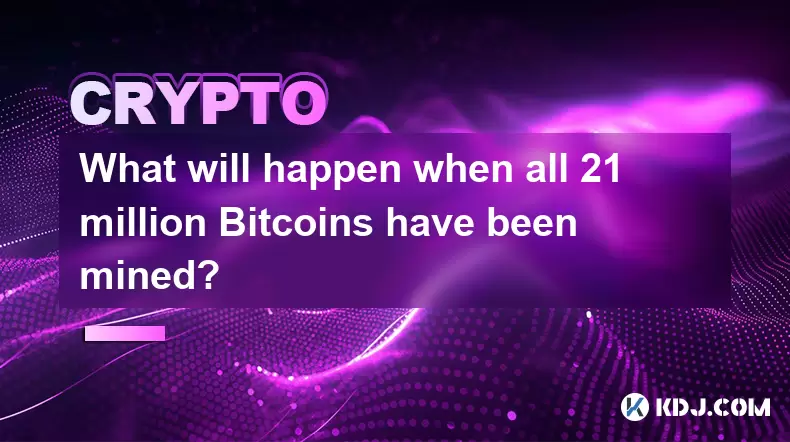-
 Bitcoin
Bitcoin $114000
0.38% -
 Ethereum
Ethereum $3494
-0.29% -
 XRP
XRP $2.876
-1.80% -
 Tether USDt
Tether USDt $0.9999
0.02% -
 BNB
BNB $749.1
-0.45% -
 Solana
Solana $161.8
-1.23% -
 USDC
USDC $0.9998
0.00% -
 TRON
TRON $0.3249
-0.42% -
 Dogecoin
Dogecoin $0.1987
-0.05% -
 Cardano
Cardano $0.7247
1.90% -
 Hyperliquid
Hyperliquid $38.39
0.52% -
 Stellar
Stellar $0.3889
2.87% -
 Sui
Sui $3.459
1.66% -
 Chainlink
Chainlink $16.18
1.43% -
 Bitcoin Cash
Bitcoin Cash $540.8
1.19% -
 Hedera
Hedera $0.2449
3.79% -
 Ethena USDe
Ethena USDe $1.001
0.03% -
 Avalanche
Avalanche $21.41
-0.12% -
 Toncoin
Toncoin $3.699
4.73% -
 Litecoin
Litecoin $110.0
3.08% -
 UNUS SED LEO
UNUS SED LEO $8.964
0.05% -
 Shiba Inu
Shiba Inu $0.00001221
1.28% -
 Polkadot
Polkadot $3.608
1.91% -
 Uniswap
Uniswap $9.150
1.59% -
 Monero
Monero $297.7
0.78% -
 Dai
Dai $1.000
0.02% -
 Bitget Token
Bitget Token $4.319
0.78% -
 Pepe
Pepe $0.00001051
1.89% -
 Cronos
Cronos $0.1323
0.20% -
 Aave
Aave $257.8
1.36%
What is the true story behind Satoshi Nakamoto and the creation of Bitcoin?
Satoshi Nakamoto's true identity remains unknown, but their creation of Bitcoin revolutionized finance by introducing a decentralized, trustless digital currency.
Aug 03, 2025 at 05:43 pm

Who is Satoshi Nakamoto?
The identity of Satoshi Nakamoto remains one of the most enduring mysteries in the world of cryptocurrency. This name is attributed to the individual or group who authored the Bitcoin whitepaper, titled "Bitcoin: A Peer-to-Peer Electronic Cash System," published in October 2008. The document outlined a decentralized digital currency that operates without a central authority, relying instead on cryptographic proof and a distributed ledger known as the blockchain. Despite extensive research, no definitive proof has emerged to confirm Satoshi Nakamoto’s true identity. Numerous individuals have been speculated to be the real Satoshi, including Hal Finney, Nick Szabo, and Dorian Nakamoto, but none have been conclusively proven.
What is known is that Satoshi communicated primarily through email and online forums such as the P2P Foundation and BitcoinTalk. The writing style in the whitepaper and early communications is highly technical, precise, and reflects a deep understanding of cryptography, economics, and distributed systems. The use of British English spelling in certain phrases has led some to speculate that Satoshi may have been based in the UK, though this remains circumstantial.
The Genesis of Bitcoin
The creation of Bitcoin was not an isolated event but rather the culmination of decades of research in cryptography and digital cash systems. Projects like b-money by Wei Dai and Hashcash by Adam Back laid foundational concepts that Satoshi incorporated into Bitcoin. The key innovation was solving the double-spending problem without relying on a trusted third party. This was achieved through a combination of proof-of-work, peer-to-peer networking, and incentive structures for miners.
On January 3, 2009, Satoshi mined the genesis block, also known as Block 0, which included a timestamped headline from The Times: "The Times 03/Jan/2009 Chancellor on brink of second bailout for banks." This message is widely interpreted as a commentary on the instability of traditional financial systems and a motivation for creating a decentralized alternative. The genesis block contains 50 BTC, though these coins cannot be spent due to their placement in the immutable ledger.
Early Development and Community Involvement
In the early days, Satoshi actively collaborated with a small group of developers and cryptographers. Communication occurred mainly through the Bitcoin mailing list and the SourceForge repository. Key figures such as Hal Finney, one of the first people to run the Bitcoin software, received the first Bitcoin transaction from Satoshi in January 2009. This transaction marked the first use of the Bitcoin network in practice.
Satoshi contributed code, reviewed patches, and guided the project’s direction. Updates were released under the name Satoshi Nakamoto, with version numbers progressing from 0.1 to 0.3. The software was written in C++ and designed to be open-source, allowing anyone to audit, modify, and distribute it. This openness fostered trust and encouraged community participation. By mid-2010, as the network grew, Satoshi began stepping back from active development.
Disappearance and Transfer of Control
In April 2011, Satoshi sent a final email to developer Mike Hearn stating, "I’ve moved on to other things. It’s in good hands with Gavin and everyone." This marked the end of direct involvement. Prior to disappearing, Satoshi had handed over control of the Bitcoin code repository, network alert key, and domain to Gavin Andresen, a trusted contributor. This ensured continuity and prevented a single point of failure.
It is estimated that Satoshi mined approximately 1 million BTC in the early days, primarily during the first months when mining difficulty was negligible. These coins remain untouched in their original addresses, leading to speculation about whether they will ever be moved. The wallets associated with the genesis block and early blocks are closely monitored by blockchain analysts.
Technical Signatures and Linguistic Clues
Researchers have attempted to identify Satoshi through linguistic analysis and code patterns. Studies comparing the Bitcoin whitepaper to writings of suspected individuals have shown similarities in syntax and terminology. For example, Nick Szabo’s writings on bit gold share conceptual parallels with Bitcoin, though he has denied being Satoshi.
The codebase itself contains subtle clues. The use of certain programming conventions, comment styles, and even timezone stamps in early commits suggest a developer with a specific workflow. However, these are not definitive. The SHA-256 hashing algorithm used in Bitcoin was already well-known, and the choice reflects practicality rather than a unique signature.
Legacy and Ongoing Influence
Despite vanishing from public view, Satoshi’s influence persists. The Bitcoin protocol has remained largely unchanged in its core design. Forks and upgrades, such as SegWit and Taproot, have been implemented through community consensus, reflecting the decentralized ethos Satoshi envisioned. The pseudonymous nature of the creator reinforces the idea that Bitcoin is not about individuals, but systems.
The mystery surrounding Satoshi has become part of Bitcoin’s allure. It emphasizes the importance of trustless systems—where the code, not the creator, is what matters. The continued operation of the network without central oversight validates the robustness of its architecture.
Frequently Asked Questions
Why hasn’t Satoshi claimed the 1 million BTC?
The unspent early coins may remain untouched as a symbolic gesture or due to loss of access. Moving them could trigger market panic or attract legal scrutiny. Their inactivity also serves as a testament to the network’s security, showing that even the creator respects the system’s rules.
Could Satoshi reappear and disrupt Bitcoin?
Even if Satoshi returned, they would have no special control over the network. Bitcoin operates on consensus rules, and any attempt to alter the protocol would require agreement from the majority of nodes and miners. The decentralized structure limits individual influence.
Has anyone successfully proven they are Satoshi?
No verifiable proof has been presented. Claims by individuals like Craig Wright have been widely disputed. Attempts to verify identity through cryptographic signatures or access to early wallets have failed to convince the community or withstand technical scrutiny.
Does the anonymity of Satoshi undermine Bitcoin’s credibility?
Paradoxically, it strengthens it. The focus remains on the technology and network, not on a central figure. This aligns with the principle of decentralization, where no single entity, including the creator, holds authority over the system.
Disclaimer:info@kdj.com
The information provided is not trading advice. kdj.com does not assume any responsibility for any investments made based on the information provided in this article. Cryptocurrencies are highly volatile and it is highly recommended that you invest with caution after thorough research!
If you believe that the content used on this website infringes your copyright, please contact us immediately (info@kdj.com) and we will delete it promptly.
- Arbitrage Adventures: Creditcoin, Kaspa, and Chasing Crypto Profits
- 2025-08-03 20:30:16
- Solana's Next Chapter: SOL Prediction and the SOLF Token Buzz
- 2025-08-03 18:30:16
- Token Chart Buzz: Analysts Eye Potential Price Increase with Mutuum Finance (MUTM)
- 2025-08-03 18:30:16
- Dogecoin, Utility Tokens, and Whales: A New Era for Crypto?
- 2025-08-03 19:10:16
- Small Cap Crypto Gem Alert: Ruvi AI's 100x Potential Shakes Up Solana, Ethereum, and XRP
- 2025-08-03 19:10:16
- Cryptos, Scarcity, and Beta Games: A Troller Cat's Perspective on the 2025 Meme Coin Mania
- 2025-08-03 19:15:16
Related knowledge

What is the difference between holding Bitcoin on an exchange versus in a personal wallet?
Aug 02,2025 at 03:15pm
Understanding Custodial vs Non-Custodial ControlWhen holding Bitcoin on an exchange, users are essentially entrusting their assets to a third party. E...

What is a 51% attack, and could it destroy Bitcoin?
Aug 03,2025 at 05:08pm
Understanding the Concept of a 51% AttackA 51% attack refers to a scenario in which a single entity or group gains control of more than half of a bloc...

What are the biggest security risks associated with holding Bitcoin?
Aug 03,2025 at 03:16pm
Exposure to Private Key CompromiseOne of the most critical security risks when holding Bitcoin is the compromise of private keys. These cryptographic ...

Can governments shut down or ban Bitcoin?
Aug 02,2025 at 09:44am
Understanding Bitcoin’s Decentralized StructureBitcoin operates on a decentralized peer-to-peer network, meaning it is not controlled by any single en...

What will happen when all 21 million Bitcoins have been mined?
Aug 03,2025 at 09:50am
Understanding the 21 Million Bitcoin CapThe 21 million Bitcoin cap is a foundational rule embedded in Bitcoin’s source code, designed by Satoshi Nakam...

What are Bitcoin transaction fees, and why do they fluctuate?
Aug 03,2025 at 01:51am
Understanding Bitcoin Transaction FeesBitcoin transaction fees are small amounts of Bitcoin paid by users to miners for processing and confirming tran...

What is the difference between holding Bitcoin on an exchange versus in a personal wallet?
Aug 02,2025 at 03:15pm
Understanding Custodial vs Non-Custodial ControlWhen holding Bitcoin on an exchange, users are essentially entrusting their assets to a third party. E...

What is a 51% attack, and could it destroy Bitcoin?
Aug 03,2025 at 05:08pm
Understanding the Concept of a 51% AttackA 51% attack refers to a scenario in which a single entity or group gains control of more than half of a bloc...

What are the biggest security risks associated with holding Bitcoin?
Aug 03,2025 at 03:16pm
Exposure to Private Key CompromiseOne of the most critical security risks when holding Bitcoin is the compromise of private keys. These cryptographic ...

Can governments shut down or ban Bitcoin?
Aug 02,2025 at 09:44am
Understanding Bitcoin’s Decentralized StructureBitcoin operates on a decentralized peer-to-peer network, meaning it is not controlled by any single en...

What will happen when all 21 million Bitcoins have been mined?
Aug 03,2025 at 09:50am
Understanding the 21 Million Bitcoin CapThe 21 million Bitcoin cap is a foundational rule embedded in Bitcoin’s source code, designed by Satoshi Nakam...

What are Bitcoin transaction fees, and why do they fluctuate?
Aug 03,2025 at 01:51am
Understanding Bitcoin Transaction FeesBitcoin transaction fees are small amounts of Bitcoin paid by users to miners for processing and confirming tran...
See all articles

























































































